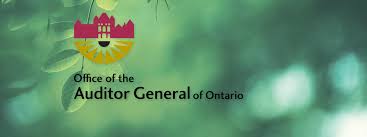 Ontario’s Auditor General, Bonnie Lysyk, issued her Annual Report today and it was extremely critical of the Ontario government’s handling of the COVID-19 response.
Ontario’s Auditor General, Bonnie Lysyk, issued her Annual Report today and it was extremely critical of the Ontario government’s handling of the COVID-19 response.
Before I go into the details, note that almost every one of the AG’s concerns had been highlighted on my old Twitter account, prior to switching back to my blog. Mr. Ford’s summer campaign tour was a waste of time and money while Long Term Care was in a crisis, Christine Elliot was called upon to resign several times between March and November, and Dr. Williams was generally considered to be inadequate in his role.
So Ms. Lysyk’s scathing report should have come as a surprise to no one. But Mr. Ford and Ms. Elliot reacted with predicable outrage when their incompetence was put on full public display. The misogynistic Mr. Ford told the Auditor General to “stay in her lane,” and Ms. Elliot claimed that the report was filled with inaccuracies. To which The Auditor General calmly reminded both of them that all data in the report was “vetted for factual accuracy.”
The Conservative denial and spin machine went into full doublespeak and tried to shoot the messenger. But the report stands on its own merit as an indictment of a government that gave the same attention to their COVID-19 response as they gave to licence plates and gas pump stickers. The shiny appearance of efficiency that failed in both function and message.
The problem with their COVID-failure is that people died. Ford and Elliot, and their Central Command Table didn’t get the job done, and now they are trying to defend their incompetence by attacking the Auditor General. It’s like watching Trump deny responsibility and reality for all of his sins of omission and commission.
For those who missed the full report, the best summary came out of Canadian Press on November 25, 2020, included here:
“Among other things, auditor general Bonnie Lysyk said that Ontario’s measures were “slower and more reactive relative to most other provinces.”
Here are five highlights from the auditor general’s report.
1. Confusing leadership structure slowed Ontario’s response
The auditor general’s report said that Ontario’s command structure had become “overly cumbersome” and was not led by public health experts. The report said that the province’s Health Command Table ballooned from 21 members to 90 participants, and now 500 people are involved. The meetings themselves were confusing, with the auditor general finding that all communication was by teleconference until July 14 – four months into the pandemic – when a switch was made to video conference.
2. Outside consultation process took up valuable time
Lysyk’s report also said that Premier Doug Ford’s government had to hire an external consultant to create a new government structure to address the public health crisis.
Although the province declared an emergency on March 17, the auditor general said it took weeks for the consultant’s approach to be implemented, with the first meeting of the Central Co-ordination Table held on April 11. The report said the consultants were needed because of significant changeover in leadership in Ontario’s Provincial Emergency Management Office, outdated emergency plans and a lack of sufficient staff.
3. A failure to learn from the past
Lysyk said key lessons from the SARS outbreak of 2003 were not implemented by the time COVID-19 hit Ontario. For example, the final report from the SARS Commission said that taking decisive action early was the most important lesson from that outbreak. The auditor general’s report said that instead it saw delays, conflicts, and confusion in the provincial government’s decision-making in the early months of the COVID-19 pandemic.
4, Ontario’s chief medical officer of health could have done more
The report found that Dr. David Williams, the province’s top public health doctor, did not fully exercise his powers under the Health Protection and Promotion Act to respond to COVID-19. The auditor general said Williams did not issue directives to local medical officers of health to ensure public health units responded consistently to the COVID-19 pandemic, and he didn’t issue directives on their behalf. The auditor general noted that in May, 34 local medical officers of health jointly prepared and signed a document stating there needed to be more direction and regional consistency.
5. Regional approach is too independent and confusing
Ontario’s auditor general found that public health in other provinces, like British Columbia, Alberta and Quebec were “simply more organized.” The report said that variations in management and operations among Ontario’s public health units contributed to fragmentation and inconsistencies across the province. It also noted that public health reforms recommended 15 years ago by the SARS Commission had not been fully acted on and that Ontario’s 34 public health units were still operating independently with best practices still not being shared as of the report’s release.“
Thank you Canadian Press for that reporting, and thank you Auditor General Bonnie Lysyk for the accuracy of your report. Now we just need a government that will truly work “For The People” – time to put your big boy pants on and pay the piper, Doug. The way I see it.
***
Skid Crease, Caledon